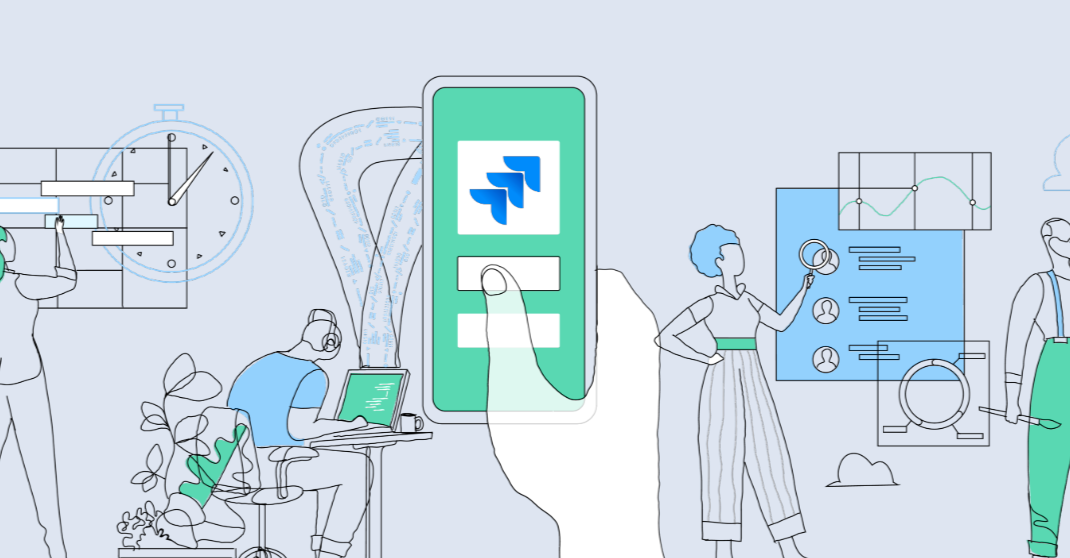10 Jira Best Practices

Jira, a powerful project management tool developed by Atlassian, is typically used by software teams as a means of software development and bug tracking. Due to the versatility of the tool, it empowers a variety of teams to efficiently manage tasks, projects and workflows. With the advanced collaborative features available, many teams rely on Jira for the smooth execution of their projects.
Whether you’re using Jira for software development, project management, or any similar process, following best practices can significantly enhance your team’s productivity and reduce roadblocks. These best practices are designed to help your team make the most out of Jira’s features and capabilities, ensuring that no matter the task, it can be carried out efficiently.
1. Define goals and objectives
Before looking into setting up your Jira instance, it’s crucial to have a clear understanding of your project’s goals and objectives. With the flexibility that the tool offers, it can be used for a wide variety of project tasks, therefore, it’s vital that the team understands the overarching goals of their project. This clarity will allow your team to build a Jira configuration that best aligns with their needs, and as a result allows them to complete objectives.
2. Train users
By providing Jira training and resources to your team members, you can ensure that they can navigate the tools confidently and make the most out of its capabilities. Since Jira offers such a wide array of features and functionalities, many users may first be intimidated by just how extensive the tool is. However, with the appropriate training, you will ensure that team members can navigate Jira confidently and use the functions to their advantage.
3. Customise workflows
Teams are able to reflect their specific workflow stages through tailoring features such as statuses, transitions and permissions. As team needs change every day, it is vital that users take the time to reflect this within a workflow in order to prevent potential roadblocks. In addition to this, taking the time to customise your workflow facilitates a collaborative environment, as each team member can see the status of everyone else’s workload.
4. Use agile methodologies
Jira supports any agile methodology, such as Scrum or Kanban, allowing teams to follow along with the built-in features to streamline their work. Tools such as agile boards, backlogs, and sprint planning are available to assist your team with managing their projects and ultimately delivering high-quality results in a collaborative environment.
5. Name and organise issue types
A project typically consists of many moving parts, which can make it difficult to track progress at times. By using Jira’s functionalities to set up naming rules for issues and organising them into standardised types, your team create consistency within the process. By ensuring that each issue is organised into a category, your team can gauge the importance of said issue and work more efficiently.
6. Integrate with other tools
While Jira boasts a mass of features that your team can take advantage of, you should always look into the integrations available. These integrations allow you to combine tools that address the specific needs of your team, for example, an integration between Trello and Jira allows teams such as software and marketing to collaborate. This has the potential to streamline workflows and ensure that information flows between systems.
7. Automate repetitive tasks
Jira offers easy-to-use automation functions that allow teams to automate tasks that are repetitive and time-consuming. By automating tasks, you not only give team members the opportunity to spend their time on higher priority tasks, but also reduce the risk of human error. An example of such automation could be issue assignment, where you can create rules that assign issues to appropriate team members based on specific criteria.
8. Add descriptions and checklists
Teams should seek to communicate effectively through detailed issue descriptions and checklists. Including detail within your descriptions, such as the appropriate documentation and contacts, reduces the need for back-and-forth communication and fosters a more streamlined process. In addition to this, checklists are a great way for a team to clearly display process steps in an organised and transparent way.
9. Keep backlog organised and updated
As a project progresses, many teams may be tempted to focus on their current issues rather than updating their backlog. However, you should not underestimate how important a backlog is – it’s a place where you can list ideas, implement tickets and add enhancements. Without a well organised backlog, your team may struggle to follow their initial goals and objectives and end up facing roadblocks along the way.
10. Make use of reporting features
Jira’s reporting and dashboard features allow your team to gain valuable insights into their progress and performance. Through visualising the information that’s relevant to the teams objectives, you can gain a better understanding of progress and allows you to identify roadblocks, allowing you to enhance your team’s efficiency as a result.
While these best practices are important, they need to be adapted to suit the needs of your team and the nature of your project. By regularly assessing your project and keeping up to date with challenges, Jira will act as a valuable asset for your teams collaboration.
If you would like to learn more about how Jira can help your team, get in touch. Our expert solutions team can answer any questions you may have.

Comments:
There are no comments for this entry yet.